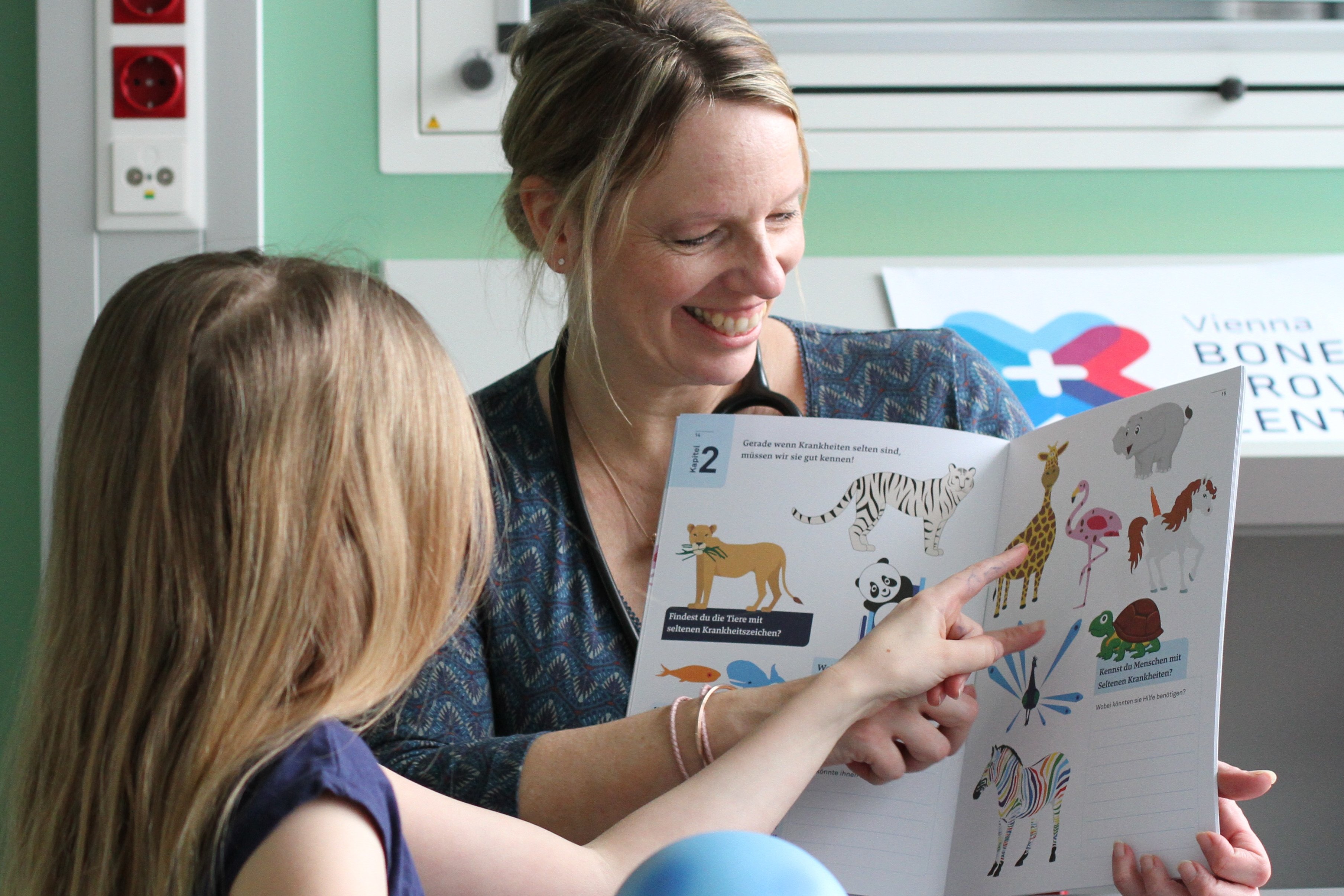
(Vienna, 26-02-2024) Almost every school class has a child with one of around 8,000 rare diseases. The disease itself is not the only burden that the young patients have to bear. To help them deal with their psychological and social problems, MedUni Vienna and Vienna General Hospital have launched a unique programme at the Department of Pediatrics and Adolescent Medicine: "Education and Care in RARE" aims to help children better understand their disease and cope with their everyday lives as well as possible. 29 February is Rare Disease Day.
"Education and Care in RARE" was developed by an interdisciplinary team led by Julia Vodopiutz at the Department of Paediatrics and Adolescent Medicine at MedUni Vienna and Vienna General Hospital. Rare diseases are genetic, chronic and often life-threatening illnesses that predominantly affect children and adolescents. At the highly specialised Comprehensive Center for Pediatrics (CCP) of MedUni Vienna and Vienna General Hospital alone, around 5,000 young patients are currently being treated and cared for. "Until now, we had no child-friendly information material for the majority of rare diseases, meaning that we were unable to provide children with illustrative material when they were informed of a life-changing diagnosis. In addition, the treatment team previously had no psychoeducation programme to influence the psychosocial burden on patients. We wanted to change this - and at the same time provide ourselves with a tool for resource-strengthening intervention," says Julia Vodopiutz, explaining the background to "Education and Care in RARE".
Being able to name your own illness
With the help of the programme and associated comic-based training materials, knowledge about their illness and how to deal with it is developed together with the young patients. "Education and Care in RARE" is the world's first psychoeducation programme that can be used for all paediatric rare diseases and can also be individually adapted to the child's current stage of development. The central element of the programme is the ability to name and explain one's own rare disease. Many rare diseases are so rare that they do not even have a name. This can leave children in a kind of speechless state and unable to express their special needs in medical, educational or other settings. "It has been shown that it makes sense to work with the children to find different names for their rare disease so that they can use the appropriate linguistic tools for their environment," explains Julia Vodopiutz from the practice.
Tools for patients and treatment teams
In addition to promoting the health literacy of young patients, "Education and Care in RARE" aims to establish a quality-assured transfer of information and skills from the interdisciplinary treatment team to the child: "This provides the team with material for active involvement in order to be able to communicate rare diseases more comprehensibly and make them easier to understand," says Susanne Greber-Platzer, Head of the Department of Pediatrics and Adolescent Medicine at MedUni Vienna and University Hospital Vienna, summarising the enormous relevance of the programme. Thanks to funding from the Fonds Gesundes Österreich (FGÖ) and the Österreichische Gesellschaft für Kinder- und Jugendheilkunde (ÖGKJ), the implementation of "Education and Care in RARE" can be offered to all Austrian paediatric institutions involved in the treatment and care of rare diseases.
Chain of lights for 300 million people affected
Around 300 million people worldwide are affected by a rare disease. As a sign of solidarity, the Medical University of Vienna and the University Hospital Vienna are taking part in the "Global Chain of Lights" campaign around "Rare Disease Day" on 29 February 2024 and illuminating their entrance areas in green, blue, pink and purple, the colours of the campaign.
Education & Care in RARE: How children learn to deal with their rare disease
After activation, data will be sent to YouTube. Further information here: Data protection